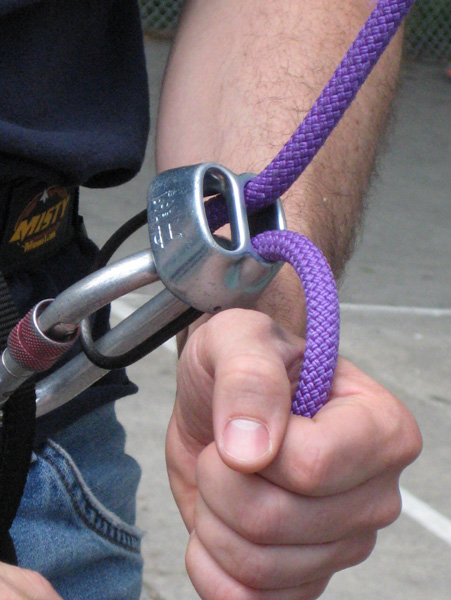Frictional force

When climbing frictional force plays a large role in completing a climb safely. First off there are climbing shoes. Climbing shoes are "special shoes" made with certain types of sticky rubber soles in order for a climber to grip better. These certain soles have a higher coefficient of friction, meaning that they cling to rocks and other surfaces, that your normal shoes would slip off of.

Also when a climber is descending (belaying themselves down) they don't want all of their potential energy to transfer into kinetic energy because then they would be moving at an unsafe rate; therefore belay devices are used in order to turn some of that potential energy into friction or thermal energy between the rope and the metal belay device. Above is the correct way to hold the rope in the belay device, if you hold the loose end of your rope upwards, it will do nothing for you and down you go, quicker than you would like.
Gravitational Force
Gravitational force is obviously
one of the biggest obstacles in climbing. You are essentially
going against this very strong force to pull your body mass up the
beautiful terrain. Gravity is defined as the force of attraction
between all masses in the universe, gravity is what allows the sport of
climbing. Without the downward force, rock climbing would not
exist; because gravity provides the fundamental challenge in climbing.
Impact Force
The impact force is the force
exerted on the lead climber in a fall, all of the force must be
countered by the belayer. The magnitude of the force depends on
four things; rope elongation, body weight, fall factor and belay
method. The dynamic belay, which is where the belayer lets some
of the rope slip through the tube or plate belay device as the fall is
arrested, this decreases the impact force greatly. There are a
few other tricks such as having the belayer jump as the force of the
fall comes on them, it gives the same affect as the dynamic
belay. The fall factor = Vertical distance fallen
Length of rope out
Length of rope out
the higher the fall factor the
larger the impact force on the climber. The most important aspect
of the fall factor is to recognize that the closer the
climber is to the belayer, the stronger the impact force will be; this
is due to less rope available to absorb some of the force.
Obviously a heavier climber is going to create a larger impact force
and should therfore think about using thicker ropes and placing extra
protection.
*HOME
*ENERGY
*NEWTONS LAWS
*BIBLIOGRAPHY